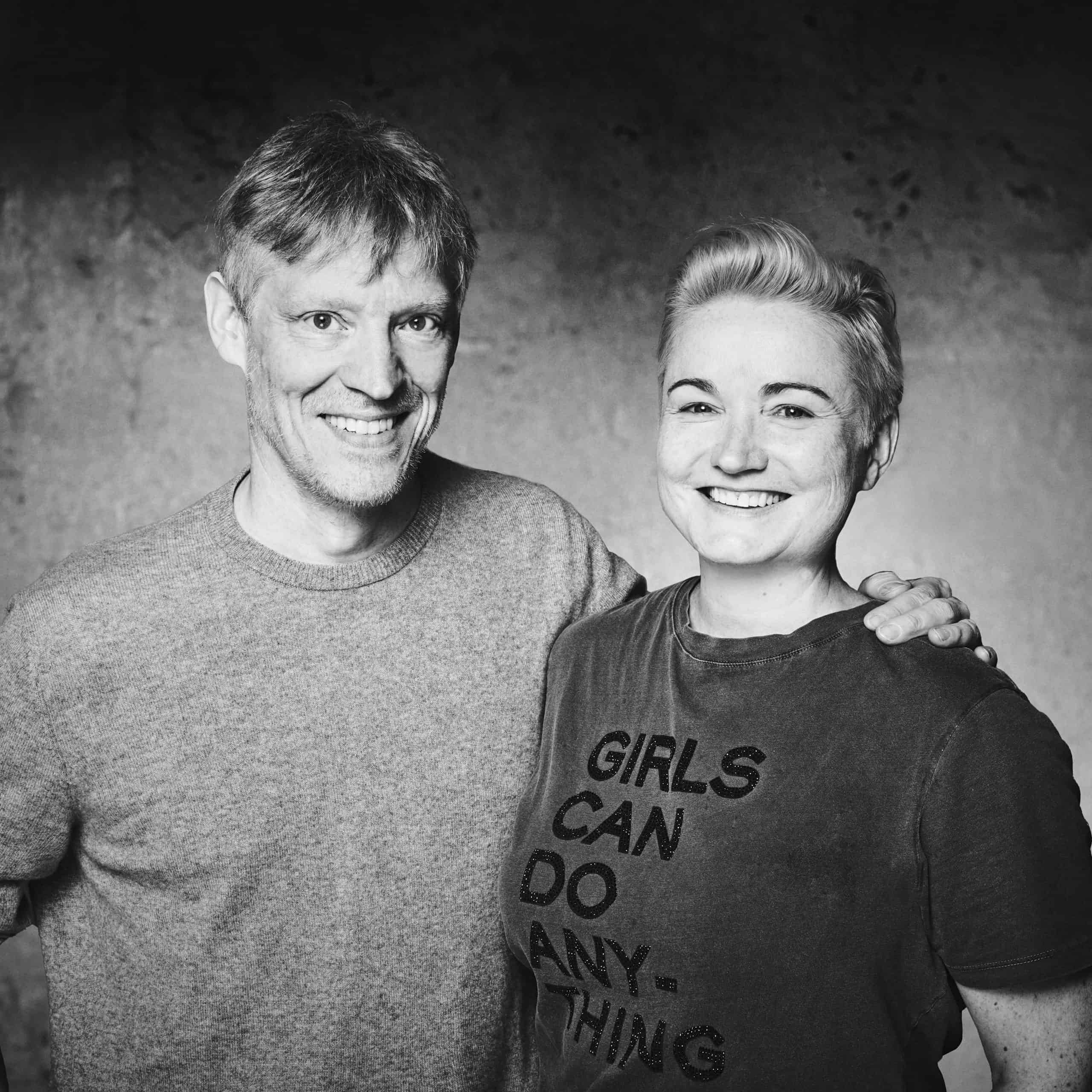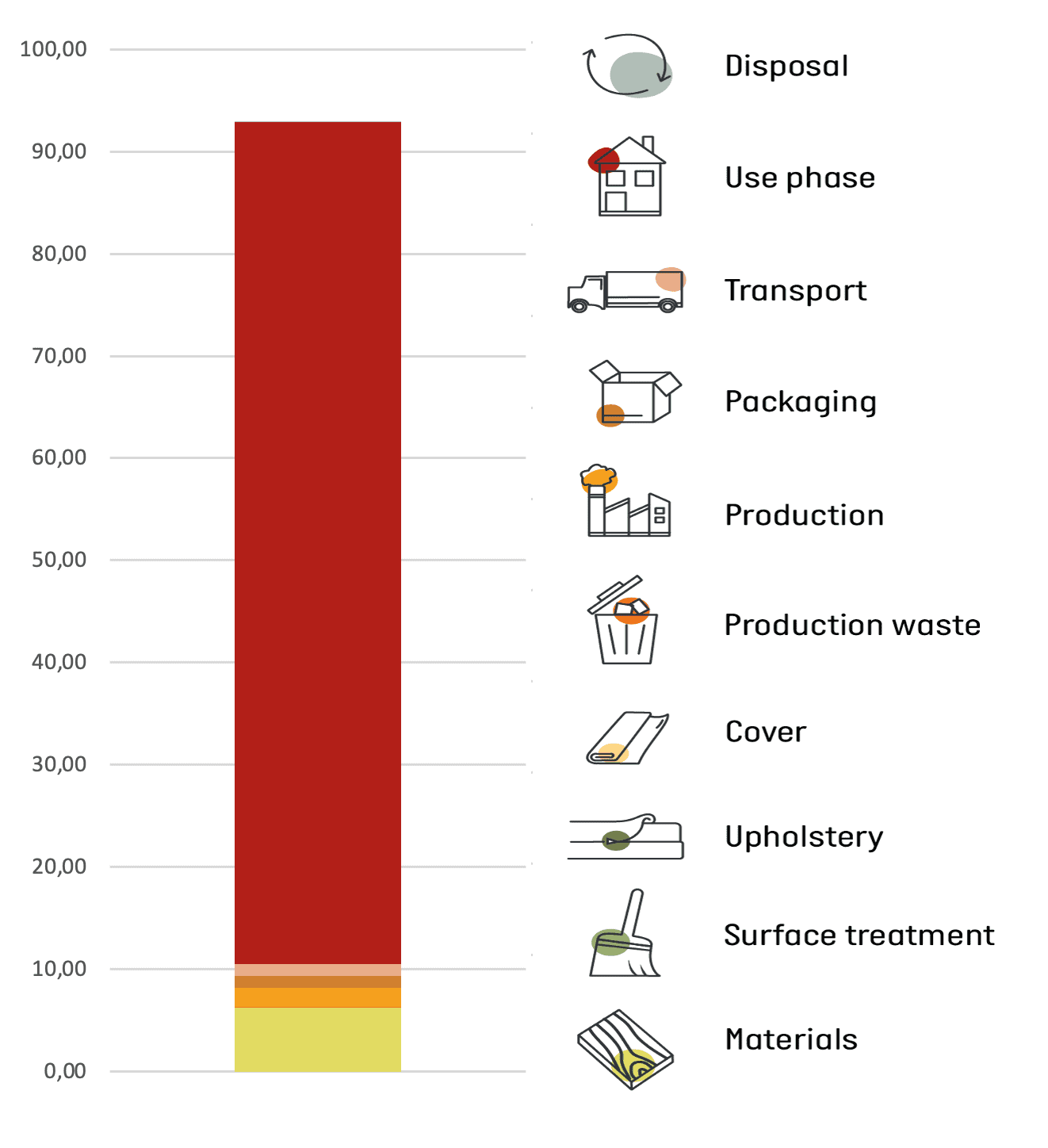Tine Mouritsen and
Christian Lystager
Tine Mouritsen and Christian Lystager are experienced designers, they are married and run Danish Design Studio, Tine Mouritsen ApS. Tine is a spacemaker and furniture designer while Christian is an industrial designer.
Reducing emissions
Creating a lighting product doesn’t scare this design duo. They are, however, challenged by the fact that they do not know their client and which lighting sources they work with.
If we look at the lamp as a shade or shell, the task is easy enough. But the technical and electrical part, is not something we can experiment with on our own. A significant part of the climate impact of a lighting product lies in the use phase. It is the energy consumption that carries the emissions, and that part is out of our influence.”
Tine and Christian work creatively with the design part of their brief. They have determined a set of circumstances from which they work.
“We are making a suggestion of a product – then we can enter a dialogue with the company after the reveal. We are dependent on the lighting source and the technology behind – and we don’t have this information right now.”
Working to make a difference
The designer couple are working to create a voluminous lamp that is decorative both in use and off function. It is designed for the “in between areas” in an office space, in contrast to a working or desk light.
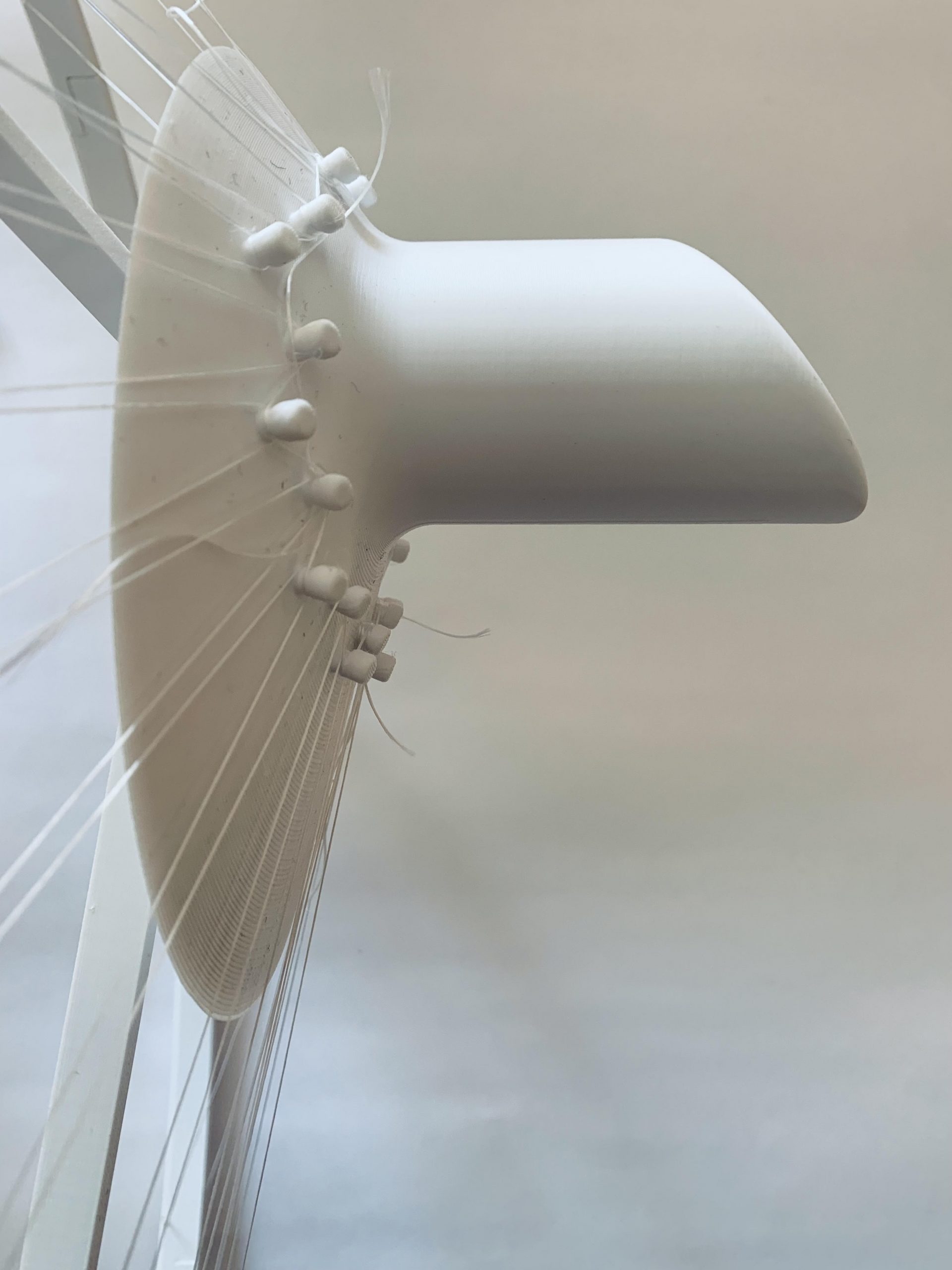
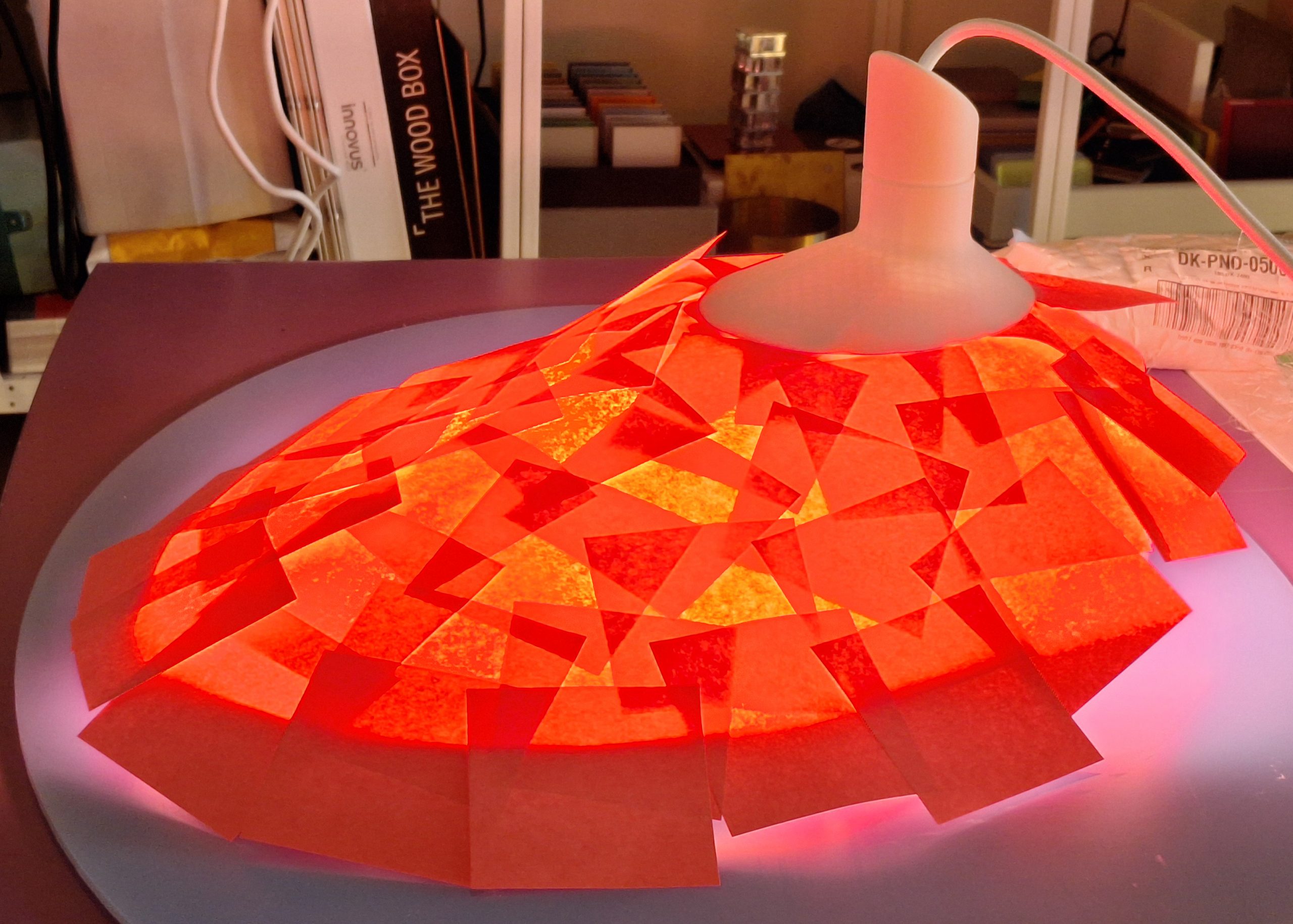
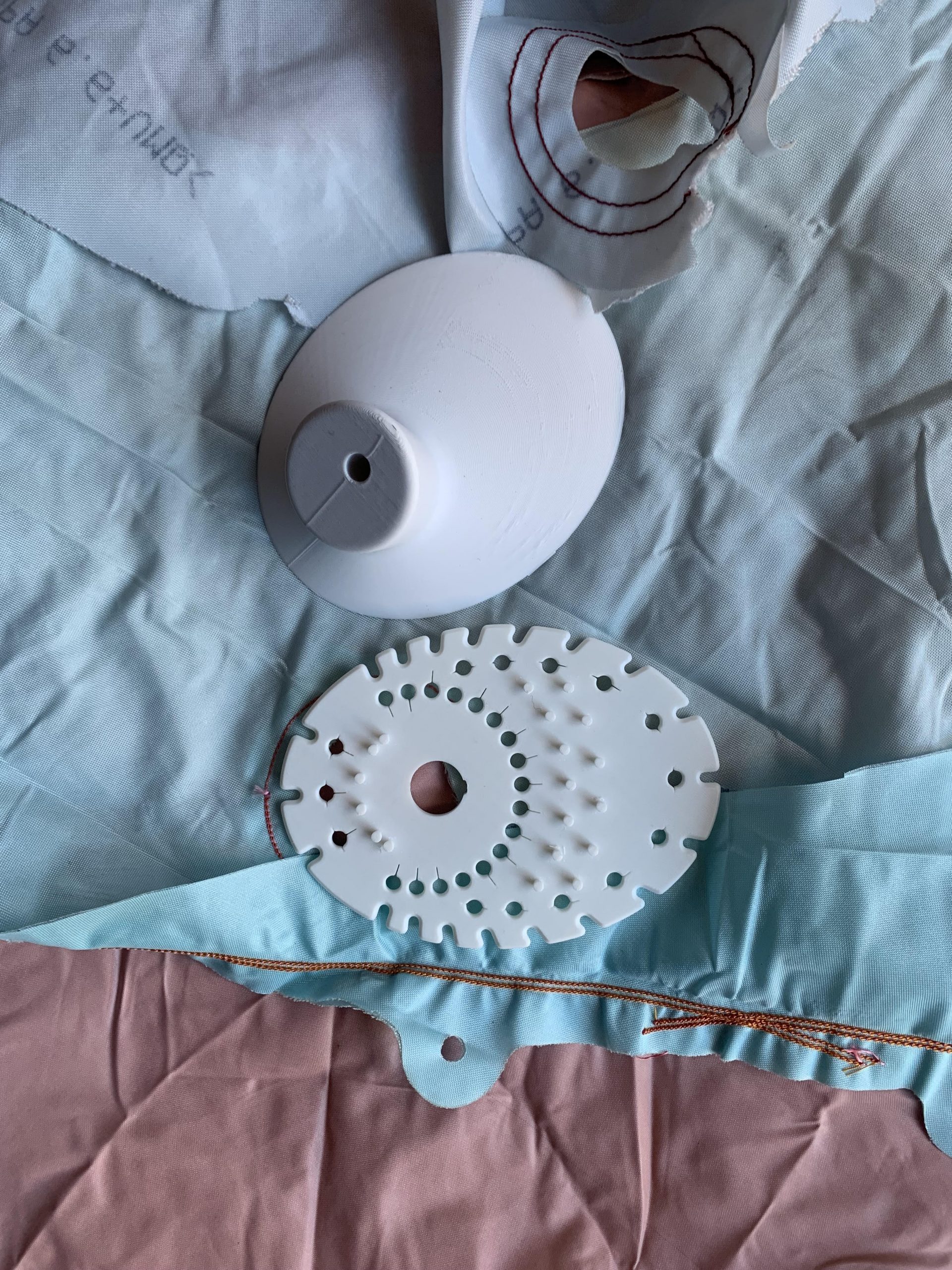
We are not designing a typical contract market lamp. We have a feeling that our client is less experienced in this category, so we hope to inspire them. We wish to create something different, something with an edge. Something decorative.”
In relation to the overall theme of reduction, Tine and Christian have chosen to embrace the fact that lower emitting products often will have an untraditional expression. They mention that many lighting products consist of aluminum, and that they have decided to go another way.
“We work with residual and used textiles, leftover materials, and recycled plastic. We wish to tap into the circular economy and create a dialogue about the advantages of using these kinds of materials. We aim specifically to create a different aesthetic look.”
Transforming our perception of design and beauty
Tine and Christian have also considered how long it will take to install their lamp, because this is a factor that in their experience also counts in a green agenda. If the mounting is too technical, a company will have to spend additional resources on the installment. Therefore, they want their product to be easy and simple to set up.
Furthermore, the designers work to make it customizable for the user, because this can contribute to prolonging the product lifetime.
”Reduction is about saving. We must break with old habits about how things must look. In the future, we don’t think one can expect the same perfection that we have seen in the past. A tiny flaw in a product will no longer be a legitimate reason for returning a product. If we want to stay true to the green transition, we must get used to things looking differently and learn to appreciate the beauty in imperfections and natural details knowing that it indicates a less emitting production process.”
This article reflects the designer’s own opinion and Målbar does not necessarily agree with their statements about materials, processes, etc.
Climate calculations and insights
Tine and Christian have named their lighting design @stake and have used rice paper and reused airbags for the lamp shade. Their lamp has an estimated total climate impact of 95 kg of CO2eq, as of which 82 kg stems from the electricity consumption during product use phase.
The design focus of working with untraditional materials seems to have lowered the footprint of the lamp as the lamp has a very low weight.
Generally, the material and production emissions are small compared to the emissions from electricity in the use phase. As the emissions from electricity are dominating, the design has the potential for further significant reductions if it allows a light source with a lower energy consumption.
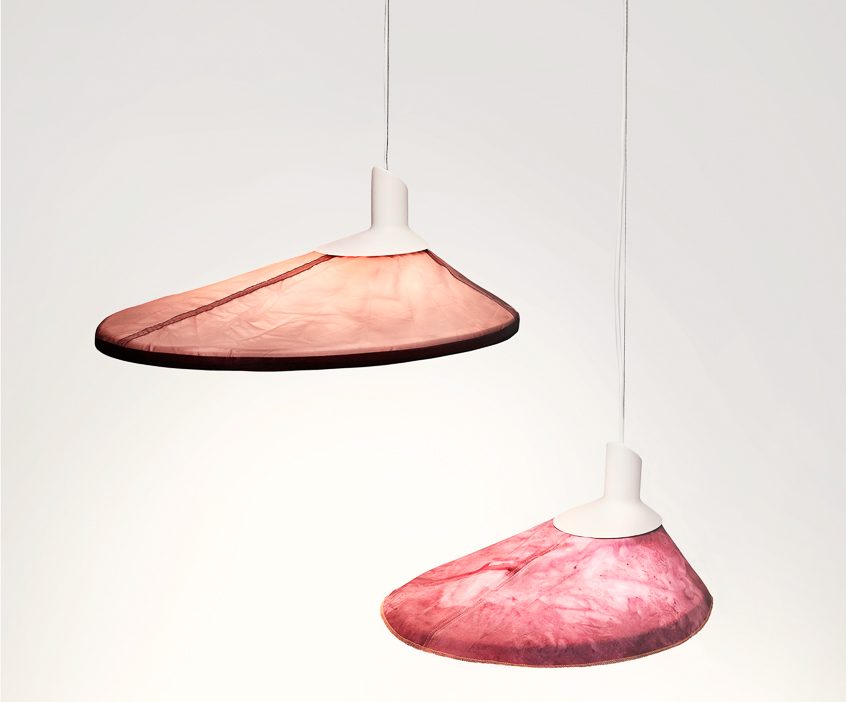
Photo by Kristine Funch
Explanation of climate bar
The climate bar shows how the emissions from the design are distributed between 10 sources within the product life cycle. Here you can see that by far the largest part of the emissions comes from the product use phase since lamps use electricity. Almost all the rest of the impact is due to the plastic parts and the electronic parts.
There are emissions from the use phase on all products, because of the waste that is generated from returned products from consumers.
Assumptions
- We assume that metals, plastics and textiles are produced as a global average unless we know it is not the case. All other materials are assumed produced in the EU
- We assume that metals, plastics, and textiles are produced according to the global average unless we know differently. All other materials are assumed to be produced in the EU
- We assume a transport distance by lorry from supplier to warehouse of 1,000 km
- We assume a transport distance from warehouse to final client of 1,000 km
Målbar builds their assumptions on their experience with industrial production and LCA’s on manufacturing companies.
Context
Målbar participates in Danish Design Makers’ 2024 design challenge, The Blind Date experiment where 19 designers and design duos answer furniture briefs from anonymous European furniture companies. The designers use Målbar’s climate screening tool to gain insigths into the climate emissions of materials and production processes, learning about the climate impact of their design choices. Ultimately, the total climate footprint of each design will be calculated and presented at ORGATEC in Cologne on October 22nd-25th 2024.
